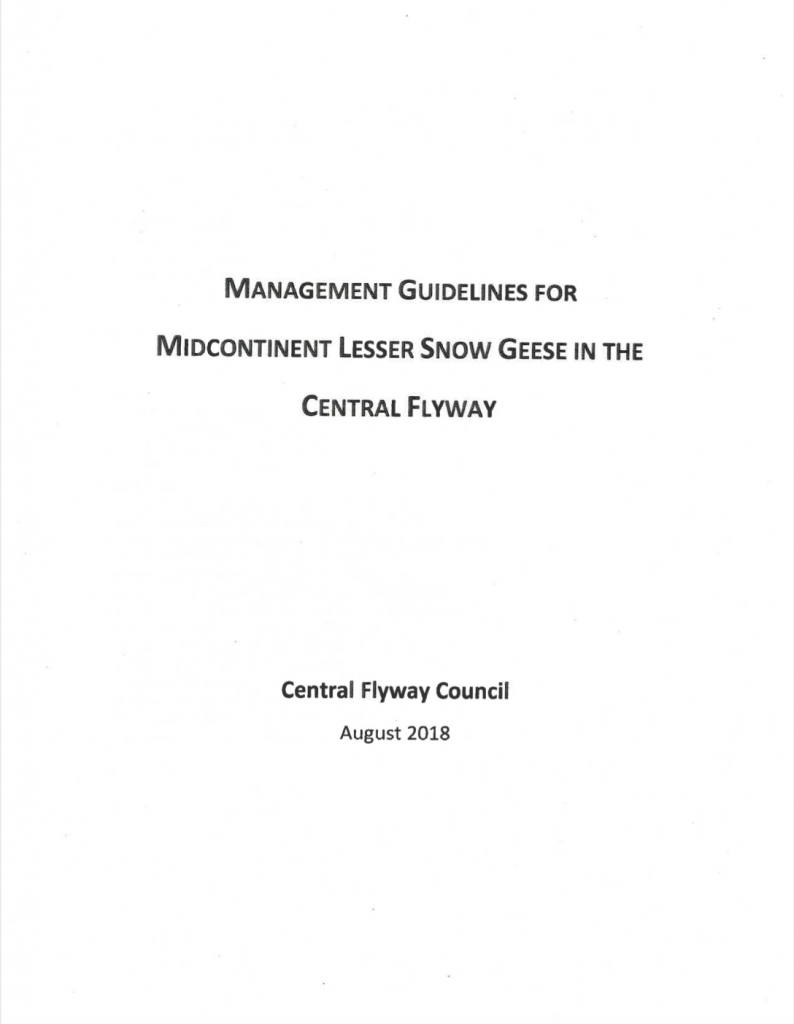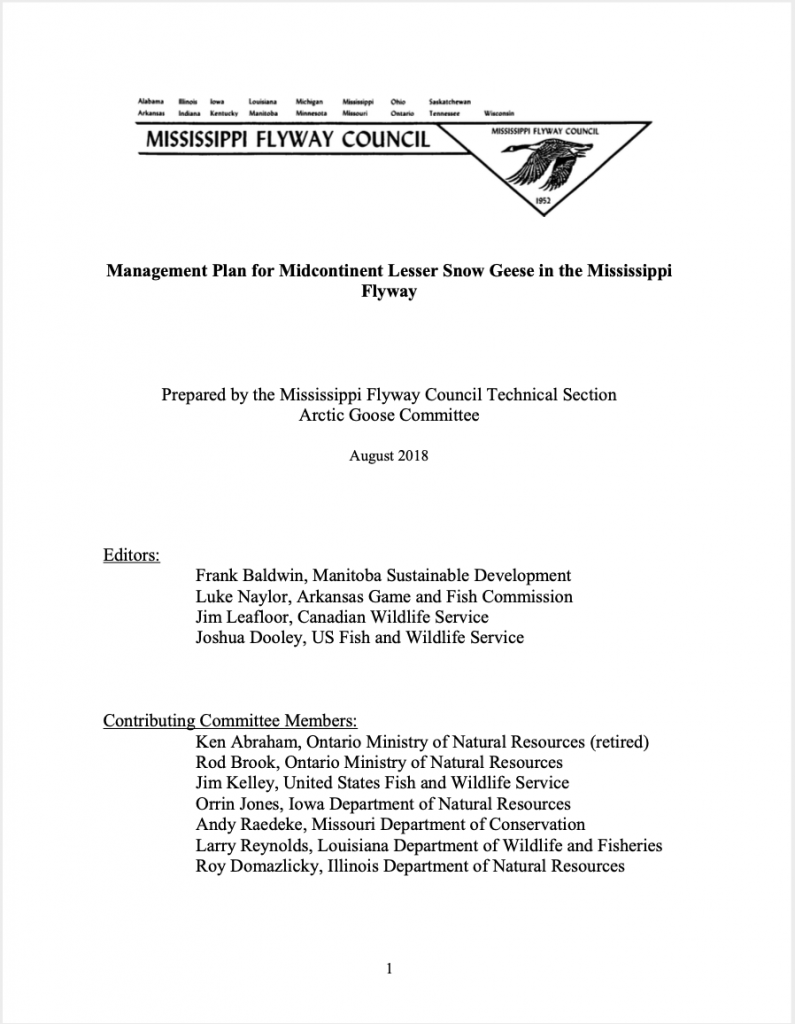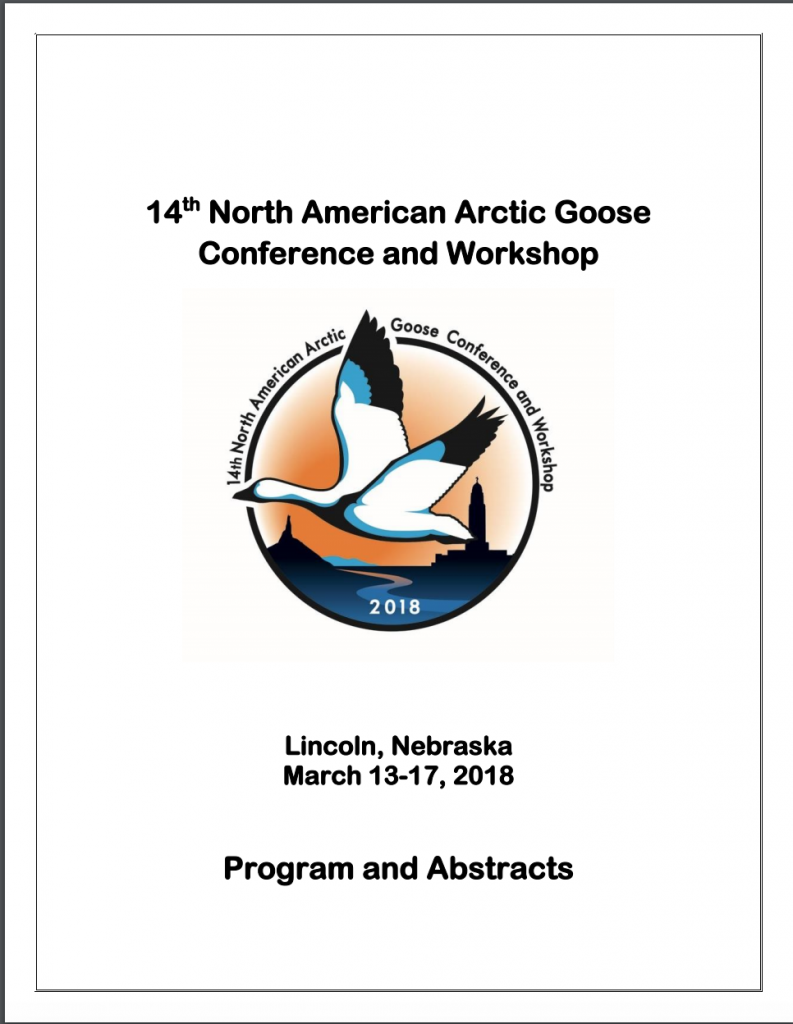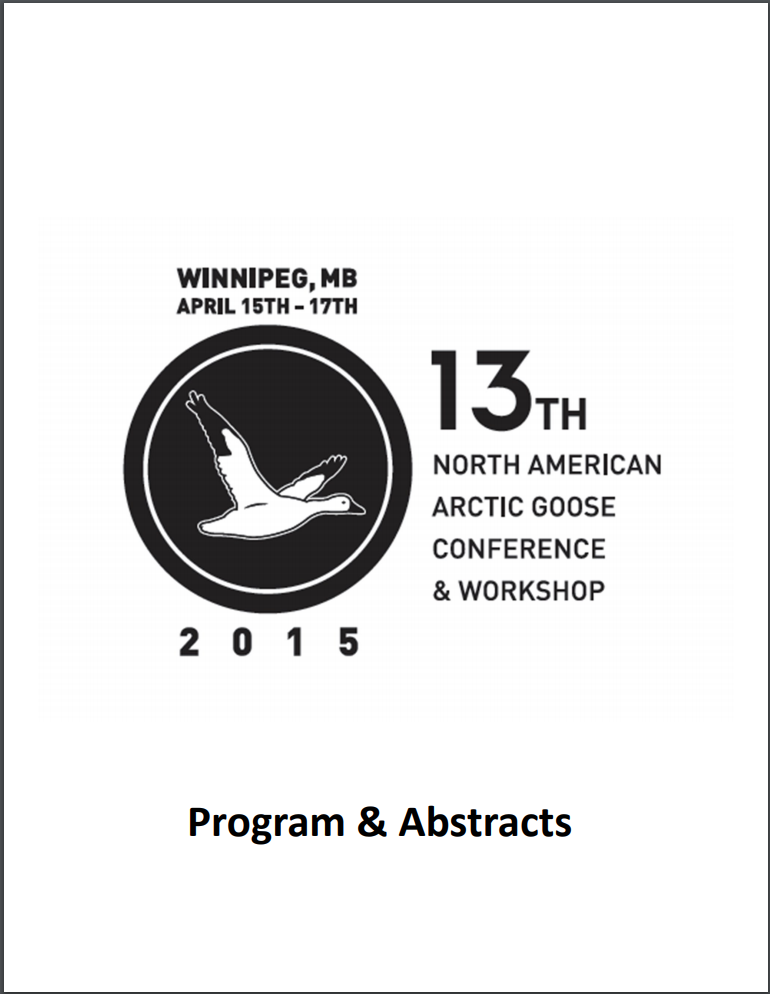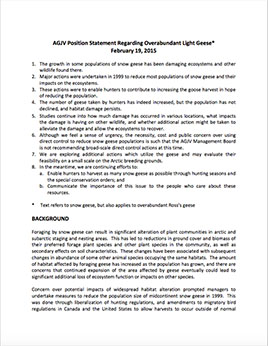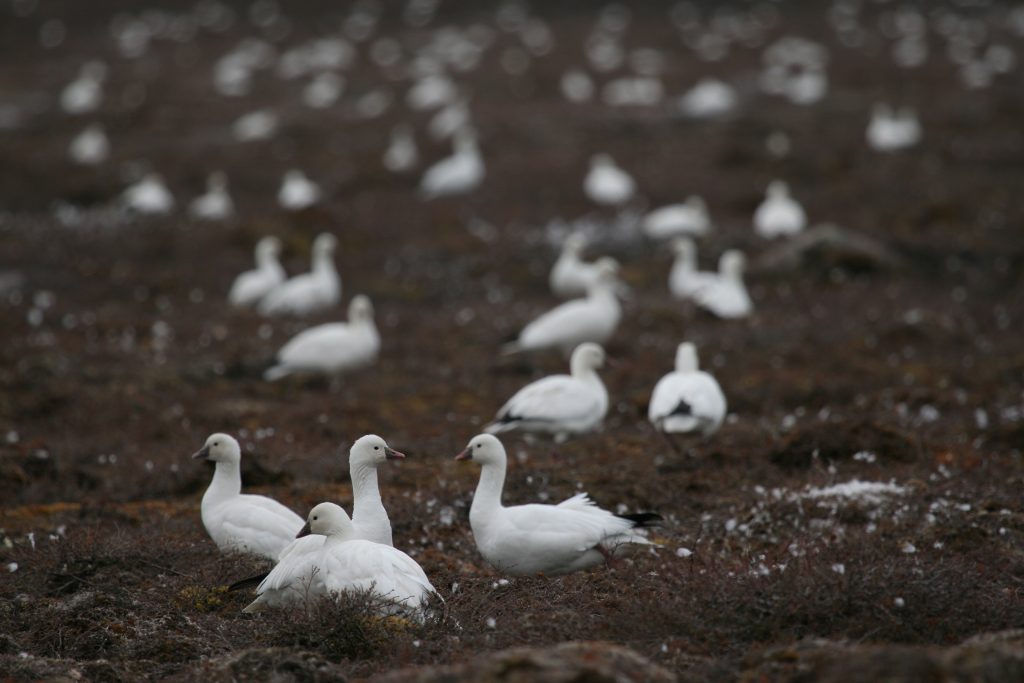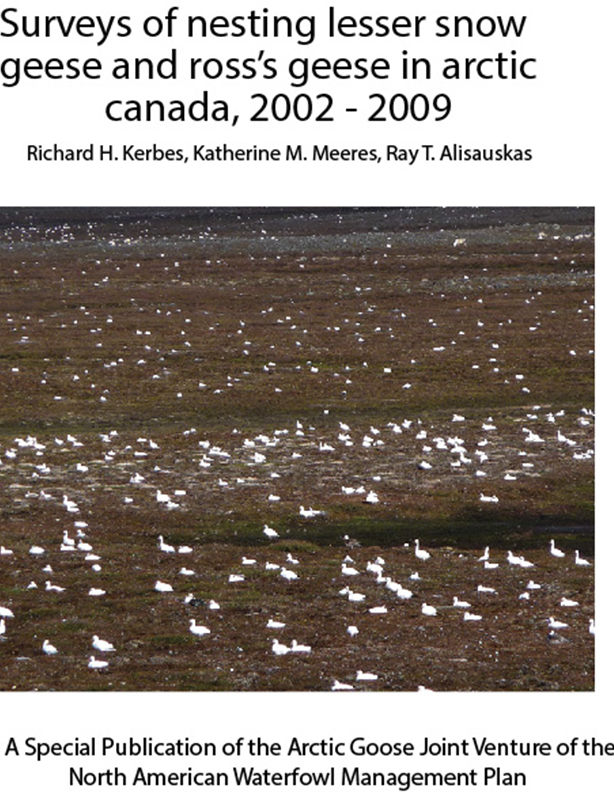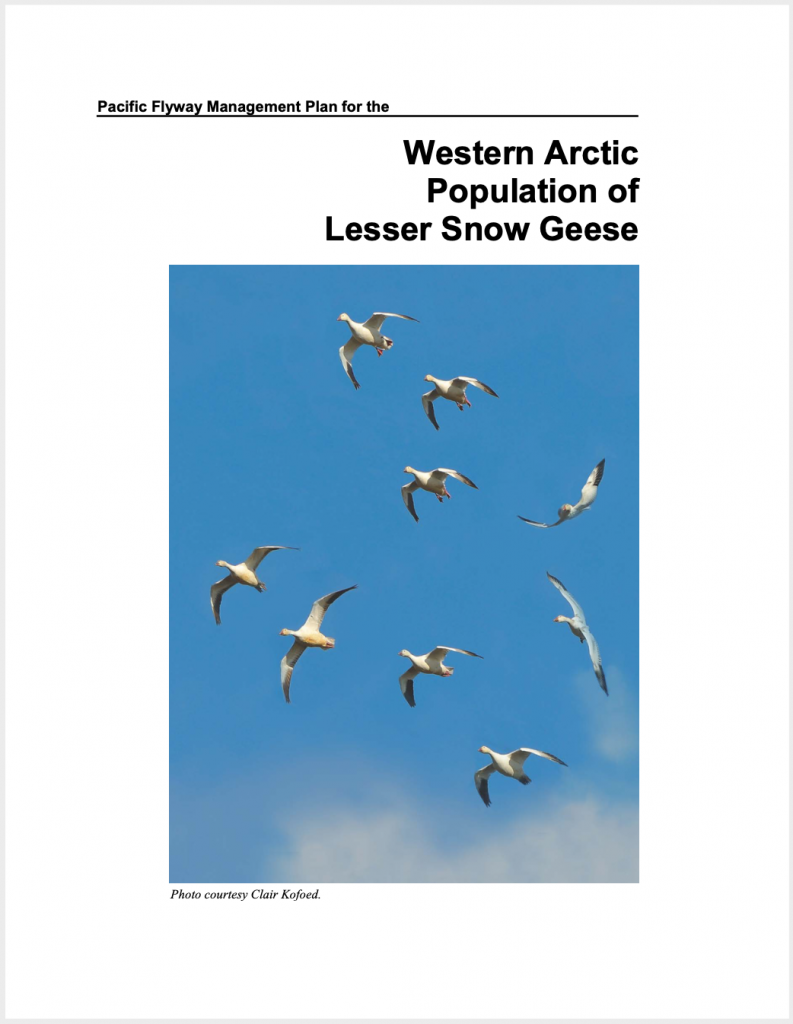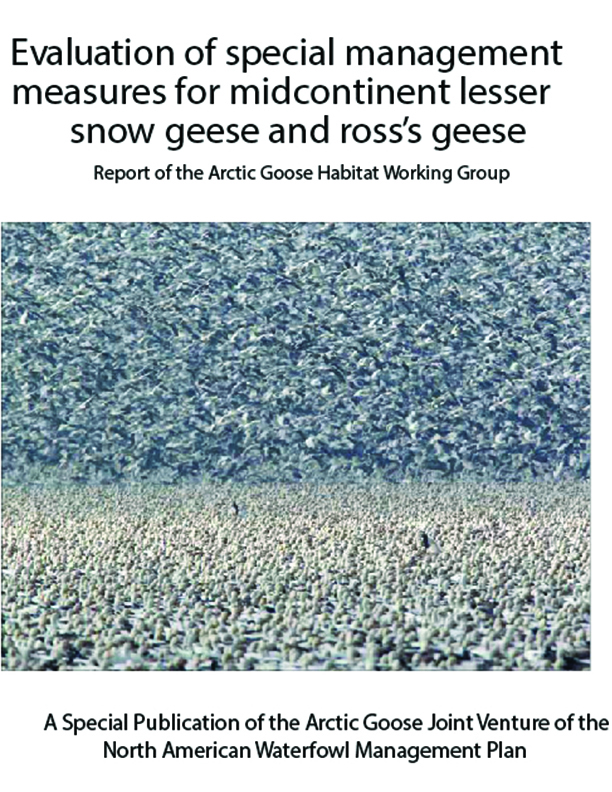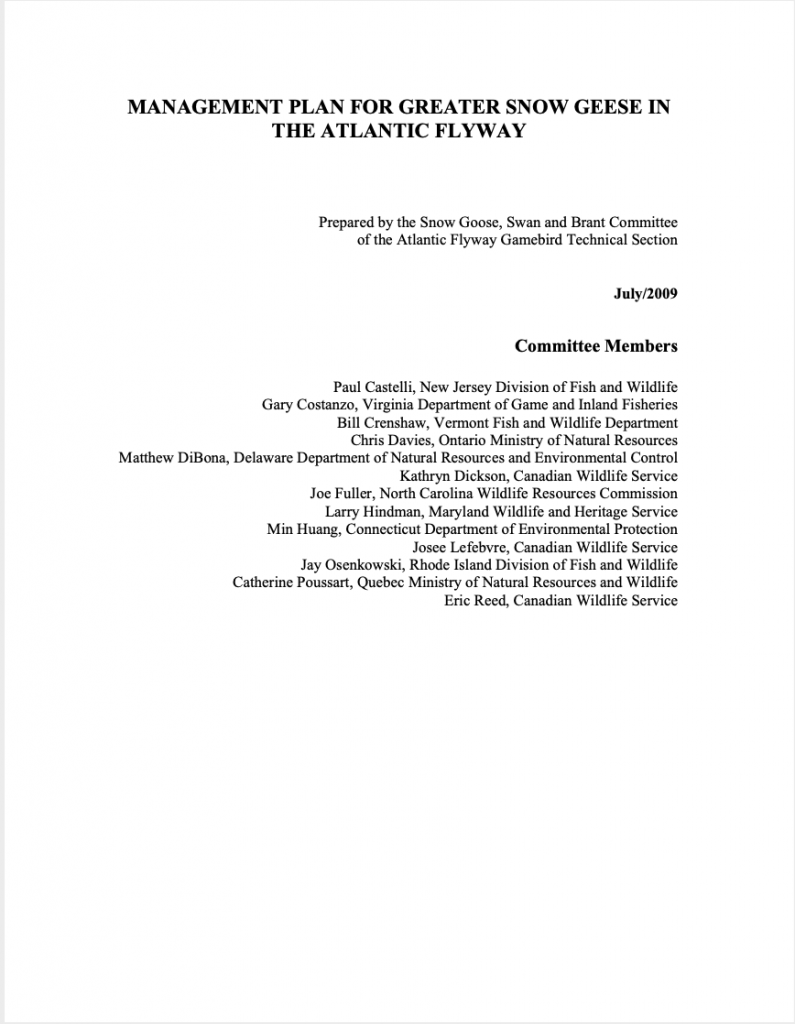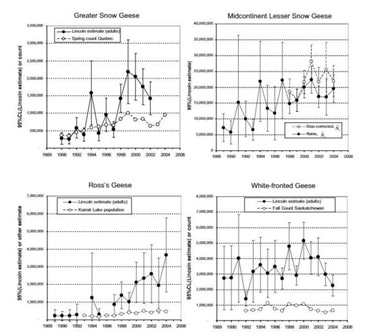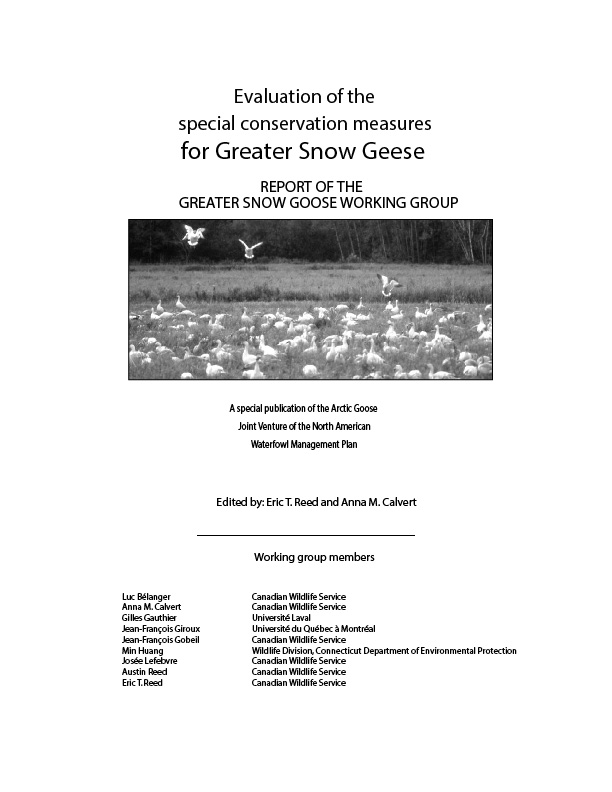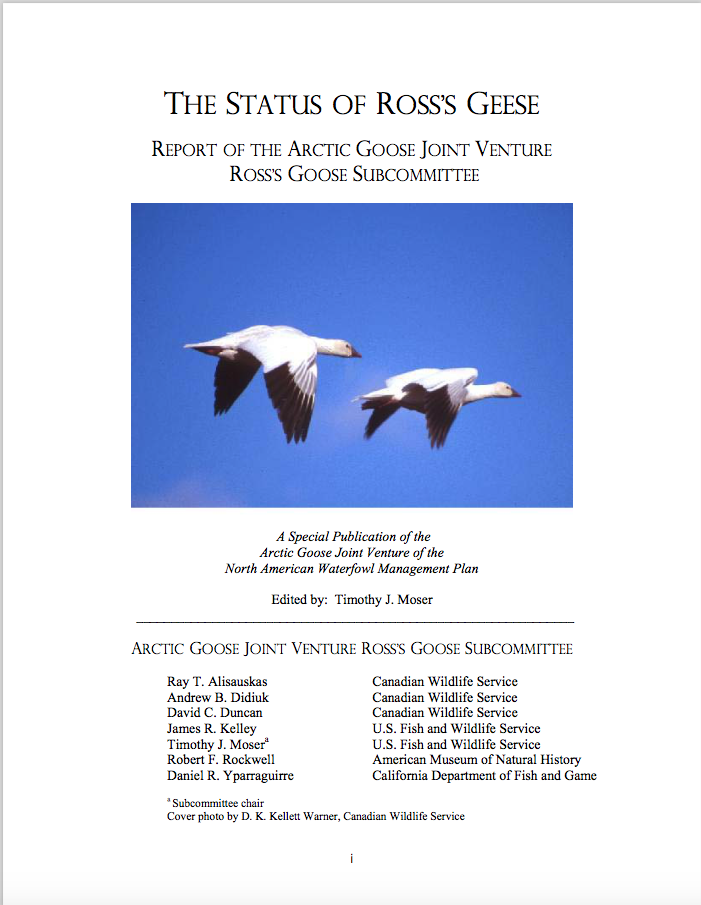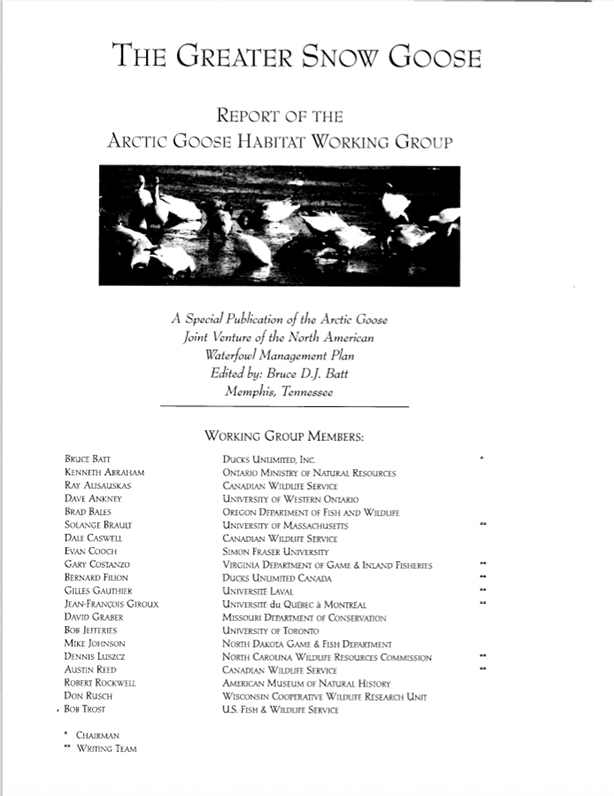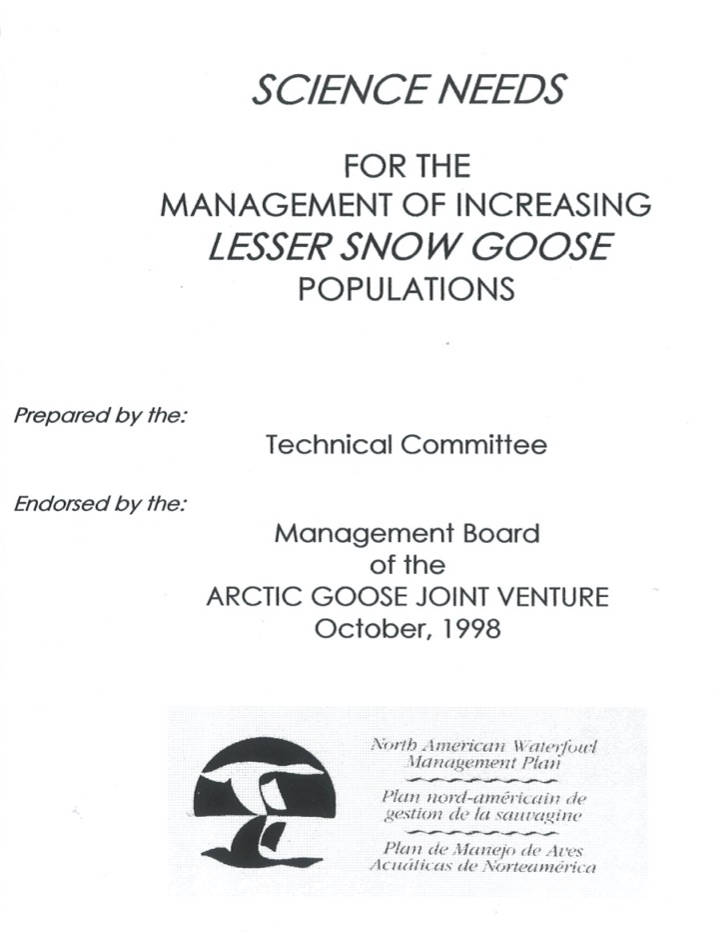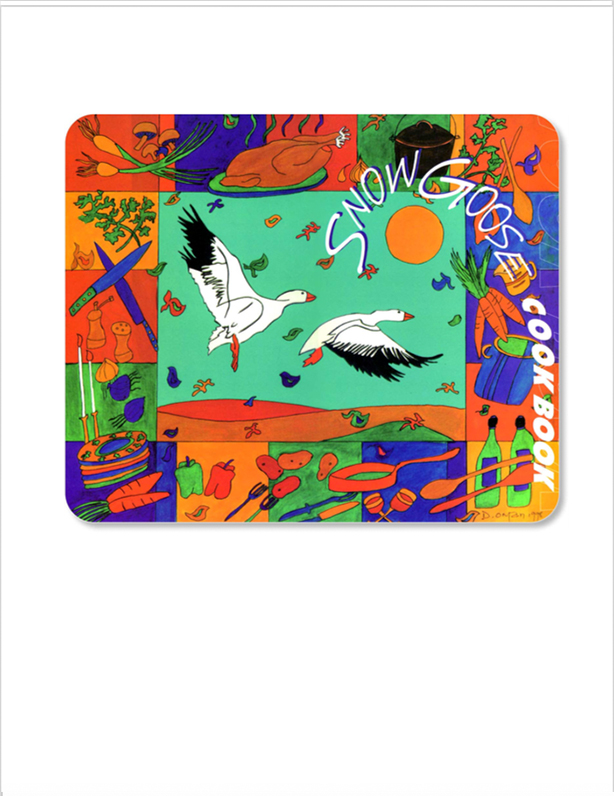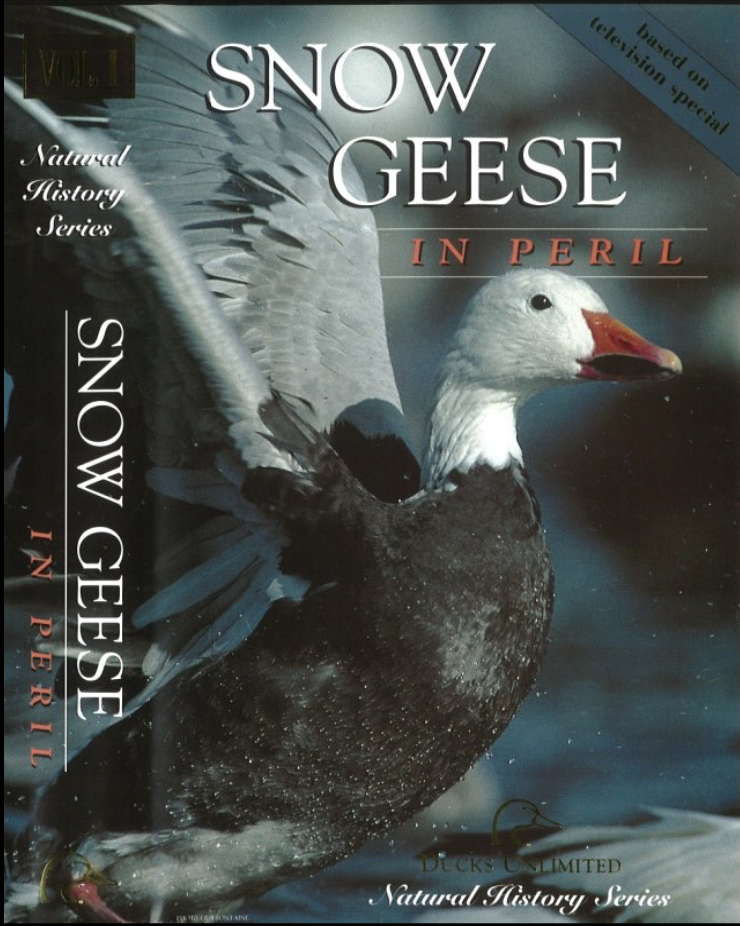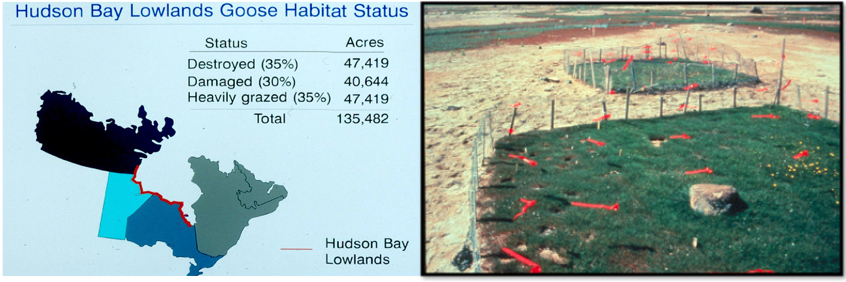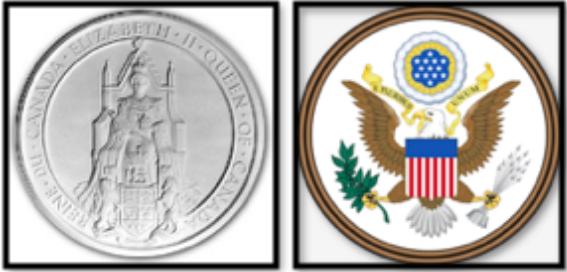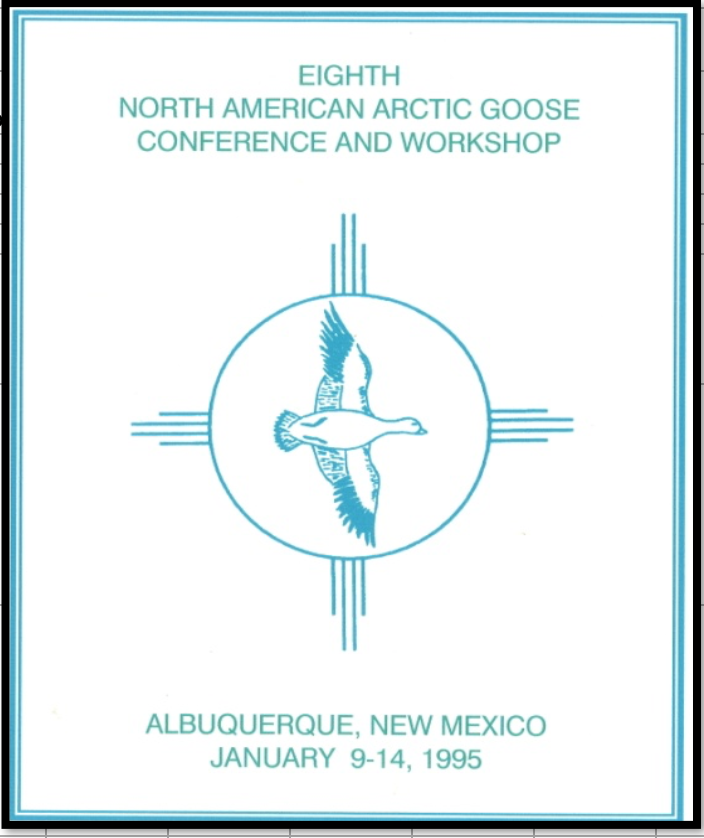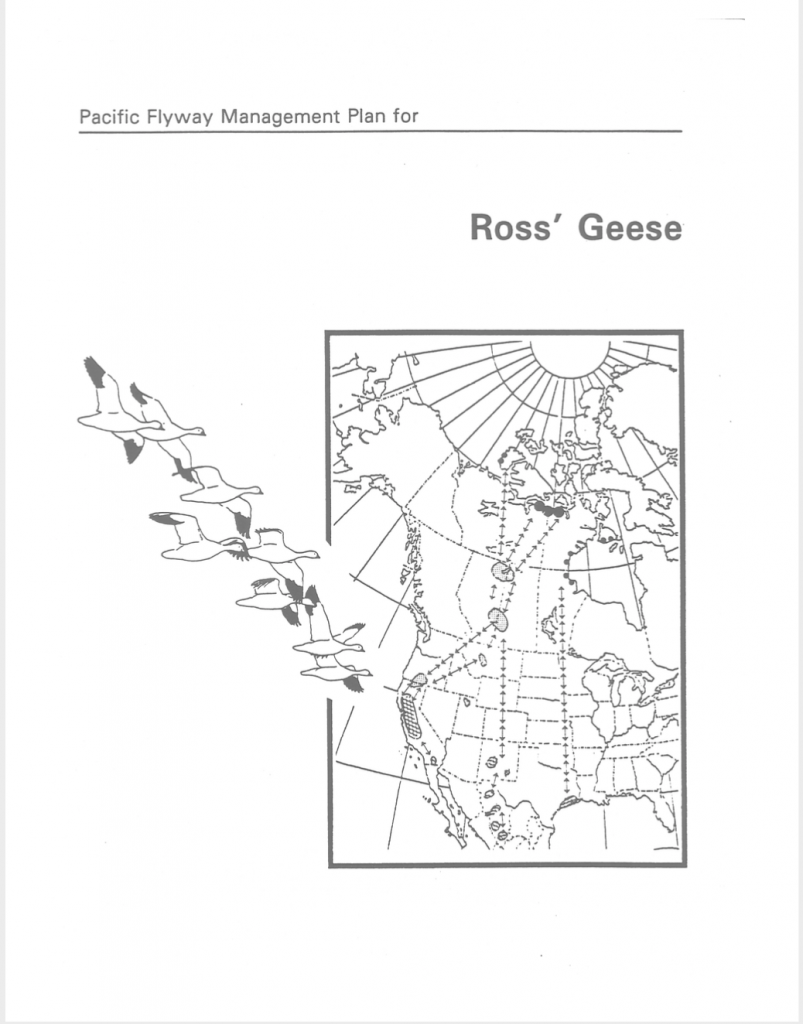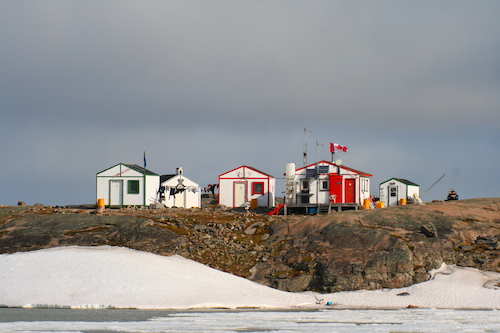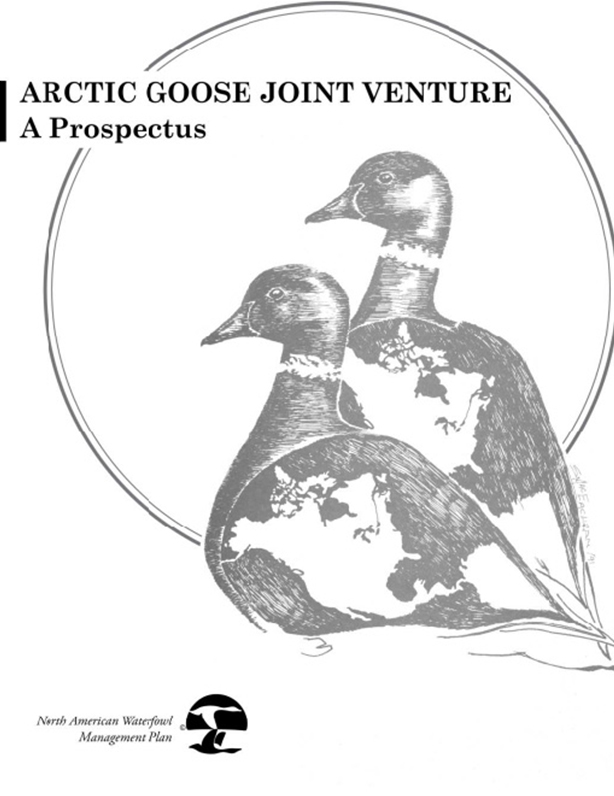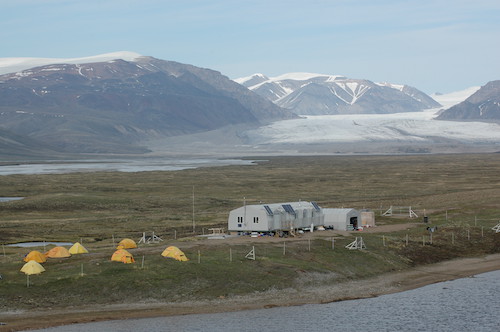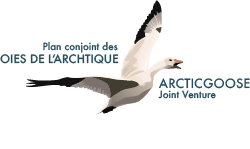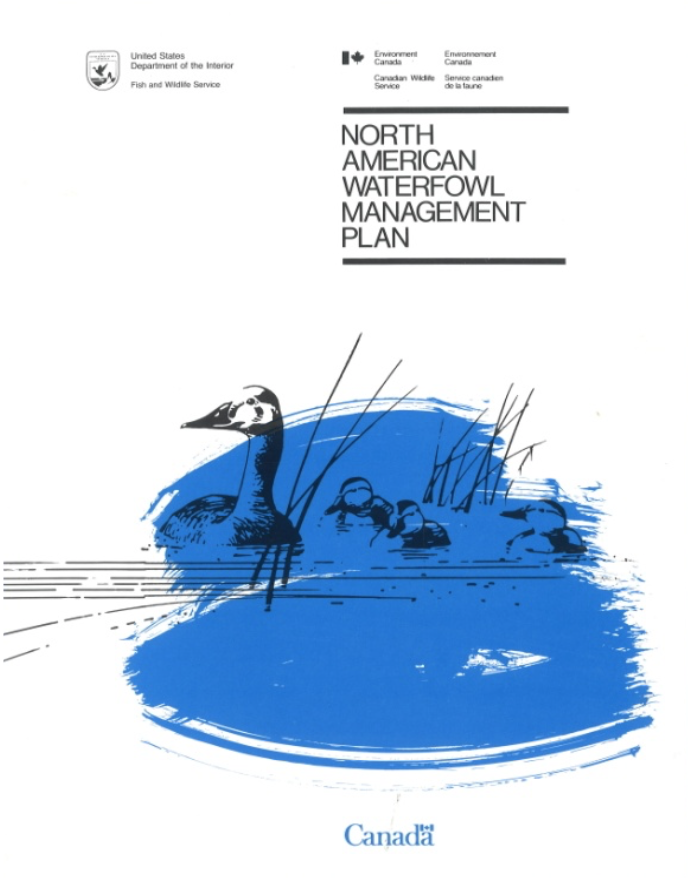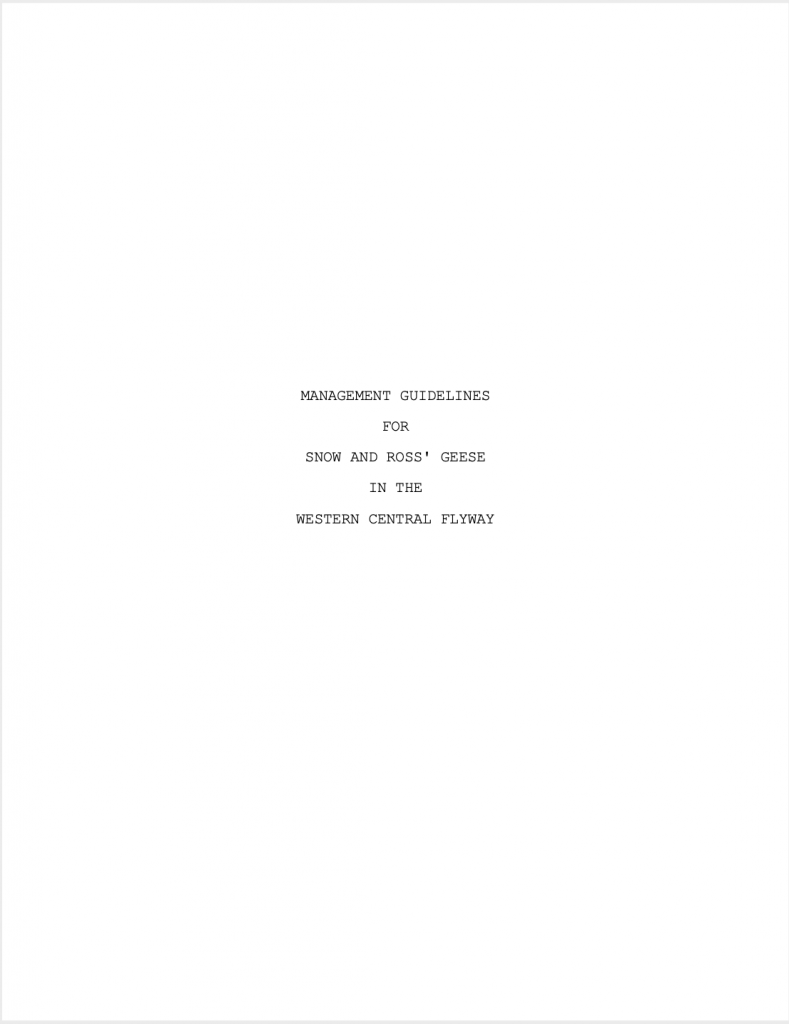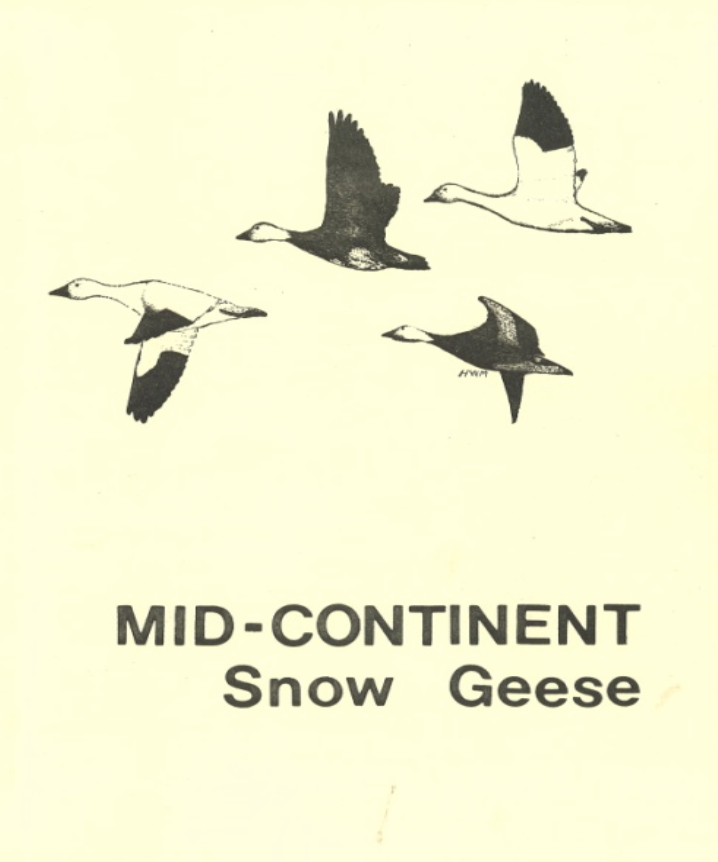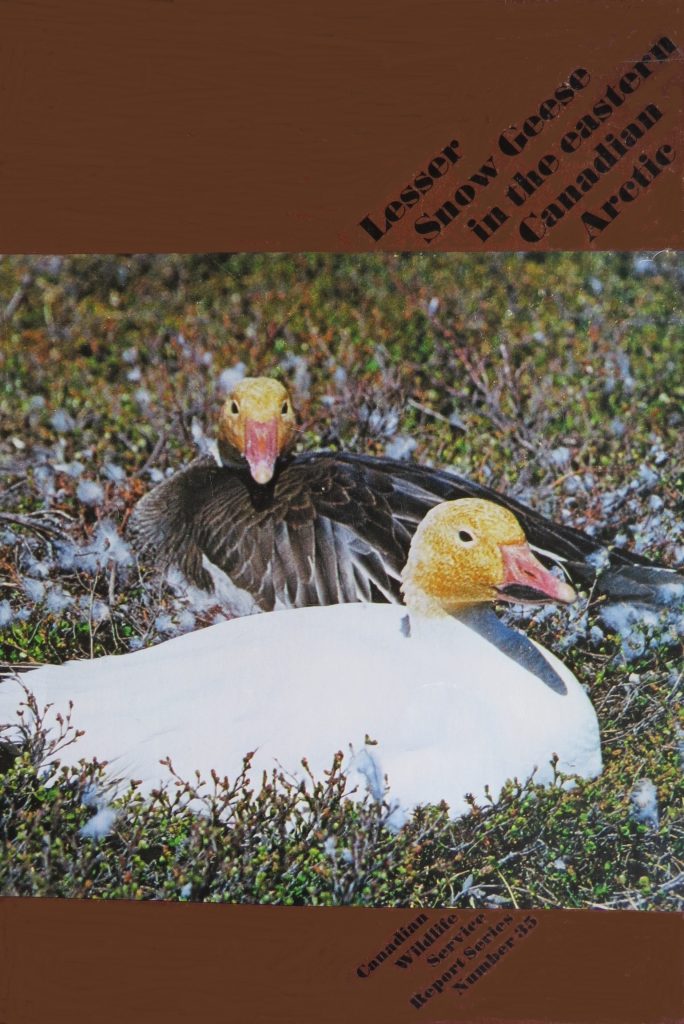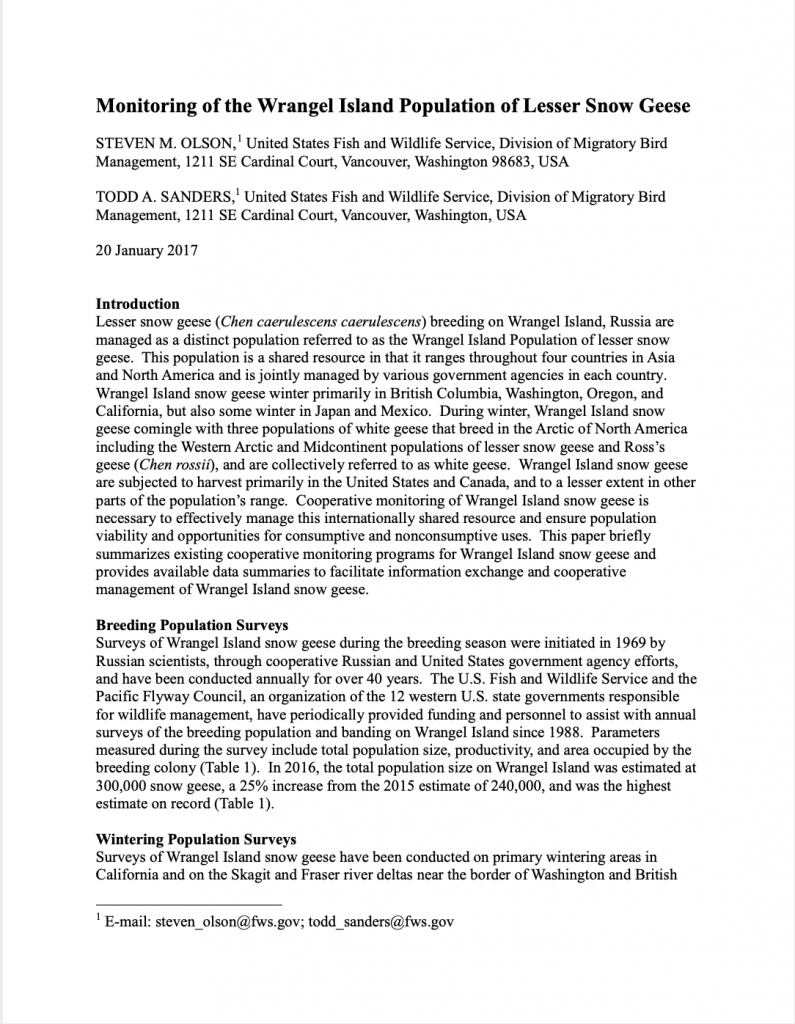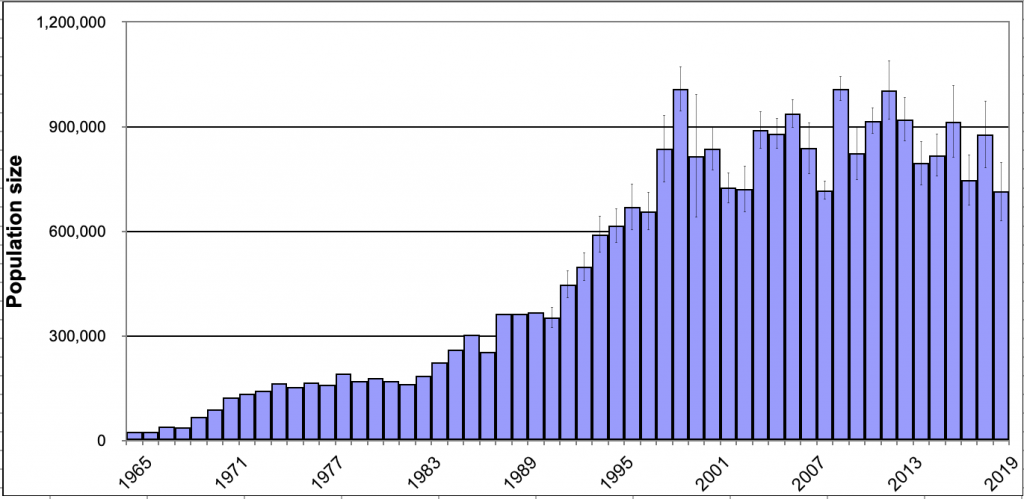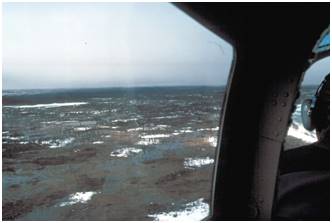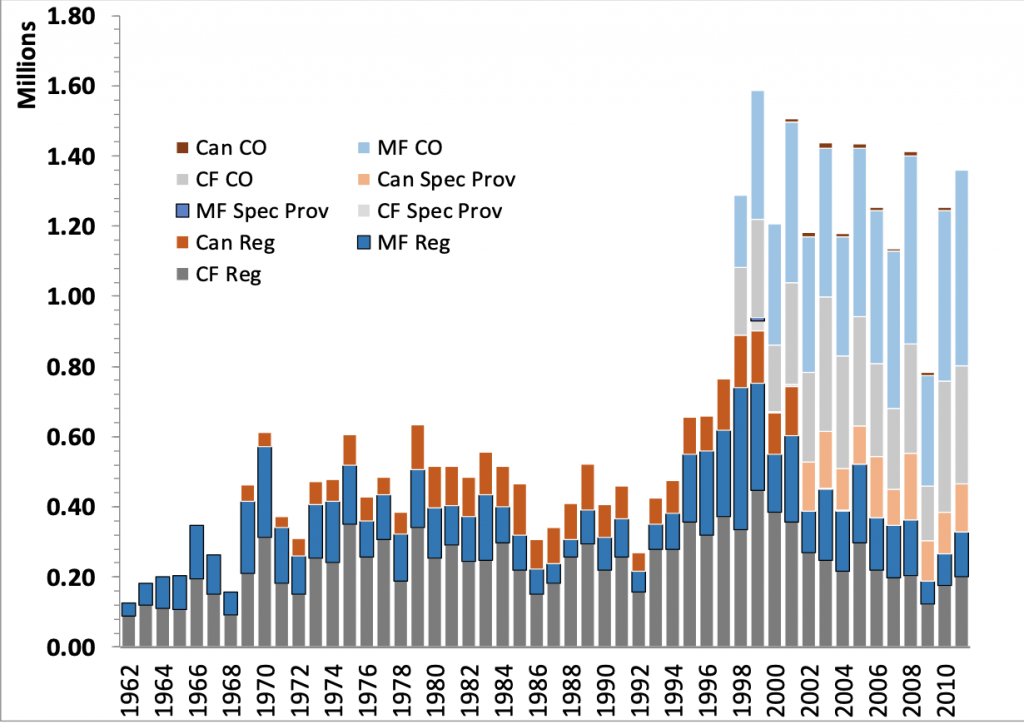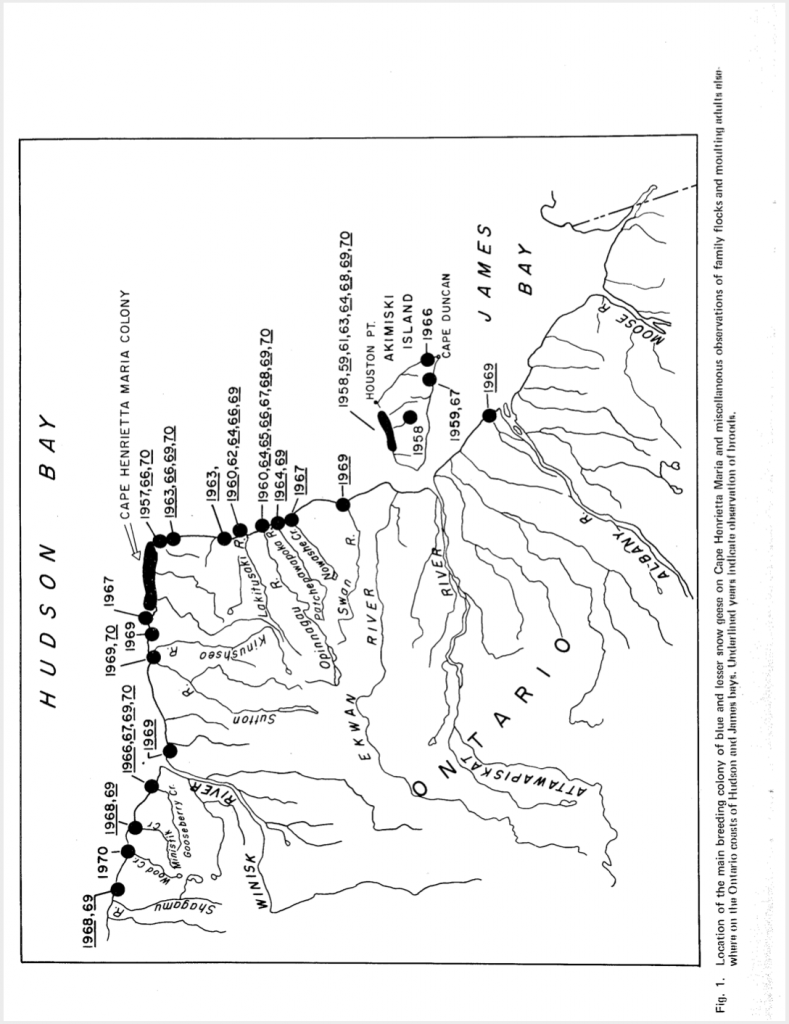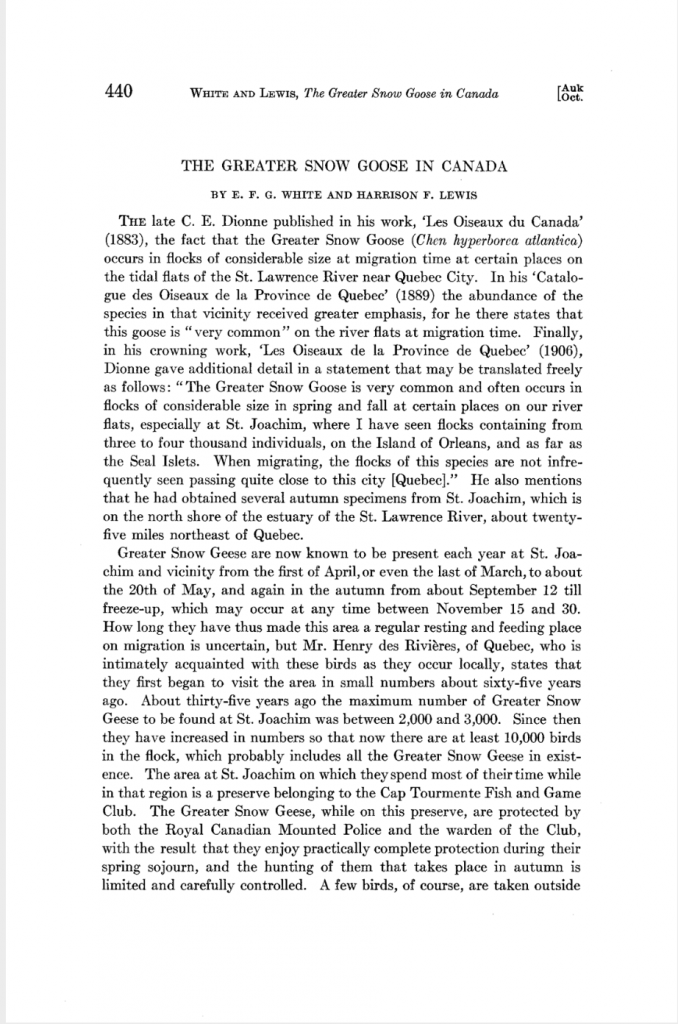Considerable thanks is owed to Mike A. Johnson, Biologist (retired), North Dakota Game and Fish Department, for gathering the information in this timeline. It was created based on his 2013 presentation “Significant milestones in understanding and managing superabundant midcontinent light geese”.
Light Goose Timeline
In 2018, the Central Flyway Council prepared and approved the Management Guidelines for Midcontinent Lesser Snow Geese in the Central Flyway. This plan uses Lincoln estimates as the primary monitoring/management index. The most recent goose management plans can be accessed through the AGJV website at: https://www.agjv.ca/related-links/
In 2018, the Mississippi Flyway Council prepared and approved the Management Plan for Midcontinent Lesser Snow Geese in the Mississippi Flyway. This plan uses Lincoln estimates as the primary monitoring/management index. The most recent goose management plans can be accessed through the AGJV website at: https://www.agjv.ca/related-links/
In 2018, the USFWS responded to the Pacific Flyway’s 2016 inquiry about pursuing conservation order regulations. The Service supported increasing bag limits within the regular season and use of other current management tools to reduce damage concerns and provided some suggestions regarding data synthesis and acquisition and possible paths forward
In Canada, special measures were implemented in the Yukon Territory in 2016.
In 2016, the Pacific Flyway Council sent a letter to the U.S. Fish and Wildlife Service requesting the Service begin work to revise the existing National Environmental Policy Act (NEPA) documents for light goose management to allow for a conservation order for light geese within the Pacific Flyway. Abundances of
In Canada, special measures were implemented in the Northwest Territories and Alberta in 2015.
In January 2014, the AGJV held a Structured Decision Making Workshop to address the question: Should the AGJV Management Board recommend direct control measures of midcontinent light goose populations to the federal agencies to mitigate negative effects of Arctic Goose numbers on Arctic and subarctic habitats? The outcome from this
In 2013, the Pacific Flyway Council prepared and approved the Pacific Flyway Management Plan for the Western Arctic Population of Lesser Snow Geese. The most recent goose management plans can be accessed through the AGJV website at: https://www.agjv.ca/related-links/
In Canada, special measures were implemented in southeastern Ontario in 2012.
In follow-up to the distribution of the Evaluation of Special Management Measures for Midcontinent Lesser Snow geese and Ross’s geese publication, several letters of correspondence ensued among the Arctic Goose Joint Venture, the U.S. Fish and Wildlife Service, the Canadian Wildlife Service, the Central Flyway Council, and the Mississippi Flyway
Following the 2009 publication, “Filling a Void: Abundance Estimation of North American Populations of Arctic Geese Using Hunter Recoveries”, Lincoln estimates of total population size, which are derived from harvest and band-recovery data, start becoming more commonly used as a method to monitor and assess Arctic goose populations. For midcontinent
In 2007, the U.S. Environmental Impact Statement (EIS) was published in 2007 and established criteria for implementing light goose Conservation Order regulations within the U.S. states of the four Flyways. To date, current Federal regulations allow for Conservation order regulations in the Atlantic, Mississippi, and Central Flyways.
In 2006, the Pacific Flyway Council prepared and approved the Management Plan for the Wrangel Island Population of Lesser Snow Geese. The most recent goose management plans can be accessed through the AGJV website at: https://www.agjv.ca/related-links/
In Canada, special measures were implemented in Saskatchewan and Nunavut in 2001.
November 1999 – The Arctic Tundra Emergency Conservation Act was passed by Congress and signed by the U.S. President to allow the Conservation Order to proceed in the U.S. until the EIS was completed. “To assure the long-term conservation of mid-continent light geese and the biological diversity of the ecosystem
In Canada, special measures were first implemented in Quebec and Manitoba in 1999.
In 1999, special measures were implemented in Canada, which allowed for harvest of light geese outside of the hunting season dates established in the Migratory Birds Convention Act of 1916. The Animal Alliance of Canada filed a lawsuit in Canada. The special measures were upheld but the court ruled that
In 1999, Conservation Order Regulations were implemented in the U.S. These new regulations allowed for harvest of light geese outside of the hunting season dates established in the Migratory Bird Treaty Act of 1916. The Humane Society of the United States filed for an injunction in federal court to stop
October 1998 – The AGJV produced a detailed report on the science needs for management of overabundant snow geese in October 1998. The report included recommendations for improved evaluation and monitoring of light goose populations, habitat, and the impacts of management actions.
February 1998 – A Stakeholders Working Group established by AFWA to conduct an independent review of the Arctic Ecosystems in Peril, produced a report that supported the findings in the “Perils” report. The 12 member stakeholders group included the Inuvialuit Game Council, the National Wildlife Federation, and the Humane Society
Light goose workshops and symposia were held in several areas to relay information and gather feedback in 1997
In 1997, effective communications was identified as mandatory to the successful implementation of any light goose management actions. DJCase and Associates was contracted to develop a strategy to educate and inform government decision makers, the media, and the public on this complex issue. As part of the communications strategy, three
January 1997 – Arctic Ecosystems in Peril: Report of the Arctic Goose Habitat Working Group, was published by the AGJV. The report included a description of the population and habitat problems and issues, analysis of population dynamics, review of potential management strategies, discussion of evaluations, and recommendations for action.
February 1996 – The Arctic Goose Habitat Working Group was established under the AGJV and was comprised of 17 members from the U.S. and Canada representing federal, state, NGO, and universities. Dr. Bruce Batt was selected as Chair.
December 1995 – The United States and Canada signed the Amending Protocol to the Convention for the Protection of Migratory Birds in the United States and Canada. The Amending Protocol allowed the taking of birds for management purposes without day and date restrictions. The Amending instructions were exchanged in October
October 1995 – The AGJV facilitated a “Light Goose Workshop” at Oak Hammock Marsh, MB . 50 representatives of the U.S. FWS, CWS, flyways, universities, NGOs and other interests participated. From that meeting there was agreement to establish a working group of experts to address the light goose issue.
March 1995 – The Central Flyway Council, and the Association of Fish and Wildlife Agencies (AFWA) Executive Council and Migratory Wildlife Committee all pass and forward recommendations to the U.S. Fish and Wildlife Service and the Canadian Wildlife Service to “establish an independent international committee comprised of appropriate experts to
January 1995 – During the 8th North American Arctic Goose Conference, the first organized discussion of the light goose overabundance issue was held at a Goose Management Roundtable. February 1995 – In follow up to the Goose Management Roundtable an open letter was sent to the Canadian Wildlife Service which
In 1992, the Pacific Flyway Council prepared and approved the Pacific Flyway Management Plan for the Western Arctic Population of Lesser Snow Geese. The most recent goose management plans can be accessed through the AGJV website at: https://www.agjv.ca/related-links/
In 1992, the Pacific Flyway Council prepared and approved the Management Plan for the Wrangel Island Population of Lesser Snow Geese. The most recent goose management plans can be accessed through the AGJV website at: https://www.agjv.ca/related-links/
In 1982, the Mississippi and Central Flyways produced and approved the first Midcontinent Snow Goose Management Plan “…snow geese may have exceeded the carrying capacity in some colonies along the west coast of Hudson Bay…” The most recent goose management plans can be accessed through the AGJV website at: https://www.agjv.ca/related-links/
Over-exploitation of vegetation by light geese first noted at La Perouse Bay in 1979
The first photo-survey on Banks Island was conducted in 1976.
In north Alaska, a small snow goose breeding colony was discovered in 1971 at Howe Island; breeding snow geese on Alaska’s Arctic Coastal Plain numbered 20,000-30,000 in the late 2010s.
National Harvest Survey (NHS) is initiated in Canada in 1967.
Comprehensive Federal harvest surveys begin in the 1960s, which have provided valuable data for understanding the effects of hunting regulations on light goose harvests, patterns and changes in hunters and harvest distribution, and population dynamics of light geese. Federal harvest surveys consist of Diary/Questionnaire Surveys to estimate total goose harvest
Charles MacInnes established a research study at McConnell River, Northwest Territories (now Nunavut) in 1958 on small Canada geese and expanded it to a snow goose study in 1964 which ran continuously until 1975. The project produced seminal work on the ecology of both species, and for snow geese these
First snow goose nesting documented at La Perouse Bay, east of Churchill, Manitoba in 1953.
In 1952, Graham Cooch established the first modern studies of the breeding biology of snow geese. He conducted ground studies on the west coast of Hudson Bay, Southampton Island, and Baffin Island. He pioneered the study of almost every aspect of their biology, including color morphs, genetics, pairing and reproductive
A small colony of nesting snow geese at Cape Henrietta Maria was reported by Robert Smith in 1944 and photographed by Harold Hanson in 1947. Smith also reported nesting on Akimiski Island, in southern James Bay, at the same time. The Cape Henrietta Maria colony is the largest aggregation of
Snow Goose colony discovered at McConnell River, west coast of Hudson Bay by Angus Gavin in 1941.
On 30 June 1938 Angus Gavin (1947) recorded the first nesting colony of 100 Ross’s Geese at a small lake (now called Discovery Lake, at 67˚ 33′ N, 101˚ 49′ O) 14 miles southeast of the Perry River estuary.
Blue Goose nesting grounds at Bowman Bay, Baffin Island discovered by Dewey Soper in 1929 – 6 year, 30,000 mile expedition
Migratory Birds Convention Act (MBCA) is passed into law in Canada to implement the Migratory Birds Convention in 1917.
